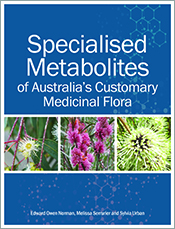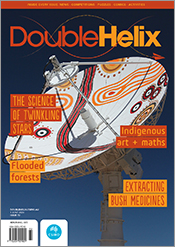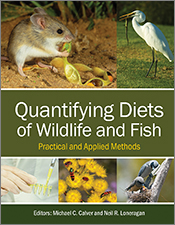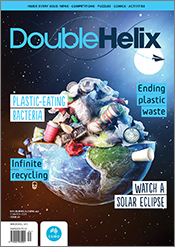Managing Arsenic in the Environment
From Soil to Human Health
By: Ravi R Naidu, Euan E Smith, Gary G Owens, Prosun P Bhattacharya, Peter P NadebaumAn authorative overview of arsenic contamination, its impacts and the latest risk management and remediation strategies.
Arsenic is one of the most toxic and carcinogenic elements in the environment. This book brings together the current knowledge on arsenic contamination worldwide, reviewing the field, highlighting common themes and pointing to key areas needing future research. + Full description
Contributions discuss methods for accurate identification and quantification of individual arsenic species in a range of environmental and biological matrices and give an overview of the environmental chemistry of arsenic. Next, chapters deal with the dynamics of arsenic in groundwater and aspects of arsenic in soils and plants, including plant uptake studies, effects on crop quality and yield, and the corresponding food chain and human health issues associated with these exposure pathways. These concerns are coupled with the challenge to develop efficient, cost effective risk management and remediation strategies: recent technological advances are described and assessed, including the use of adsorbants, photo-oxidation, bioremediation and electrokinetic remediation.
The book concludes with eleven detailed regional perspectives of the extent and severity of arsenic contamination from around the world. It will be invaluable for arsenic researchers as well as environmental scientists and environmental chemists, toxicologists, medical scientists, and statutory authorities seeking an in-depth view of the issues surrounding this toxin.
- Short descriptionNews
No longer available in a print edition.
Reviews
"This volume is a valuable compendium of information that provides a broad perspective on arsenic as a public health problem. The editors and contributors are to be commended for their efforts, which will help shape the future research agenda for arsenic."
David J. Thomas, Environmental Chemistry, Vol. 3, 2006
"A useful amalgamation of current research and understanding… It merits attention."
P.L. Smedley, European Journal of Soil Science, January 2007
Details
ePDF | February 2006ISBN: 9780643093515
Publisher: CSIRO Publishing
Available from eRetailers
Features
- Contains contributions from an international team of key researchers in the field
- Includes individual country reviews and recent international case studies, giving a broad perspective on the extent and severity of arsenic contamination and poisoning throughout the Asia-Pacific region, where the majority of research has occurred to date.
- Takes a whole of systems approach, providing a comprehensive picture of the transfer of arsenic from ground water to humans, impacts to human health and management strategies
- Describes recent technological advances for risk management and remediation
Contents
Editors and contributorsIntroduction
Ravi Naidu, Euan Smith, Gary Owens, Prosun Bhattacharya & Peter Nadebaum
Part A. Arsenic in the Asia–Pacific region
1. Arsenic contamination incidents around the world
Mohammad Mahmudur Rahman, Mrinal Kumar Sengupta, Uttam Kumar Chowdhury, Dilip Lodh, Bhaskar Das,
Sad Ahamed, Debapriya Mandal, Md Amir Hossain, Subhash Chandra Mukherjee, Shymapada Pati,
Kshitish Chandra Saha & D Chakraborti
2. Arsenic in aquifers of the Bengal Basin: from sediment source to tube-well used for domestic water supply and irrigation
William Burgess & Matin Ahmed
Part B. Analytical tools for assessing the dynamics of arsenic in environmental samples
3. Arsenic speciation in the environment
Kazi Akter & Ravi Naidu
4. Solid phase speciation of arsenic
Markus Gräfe & Donald L Sparks
Part C. Dynamics of arsenic in groundwater
5. Mobility of arsenic in groundwater in part of Brahmanbaria district, NE Bangladesh
Prosun Bhattacharya, Kazi Matin Ahmed, Sandra Broms, Johan Fogelström, Gunnar Jacks, Ondra Sracek,
Mattias von Brömssen & Joyanto Routh
6. Humic substances and arsenic in groundwater
MA Simeoni & PB Hostetler
7. Natural occurrences of inorganic arsenic in the Australian coastal groundwater environment: implications for water quality in Australian coastal communities
James VS Smith, Jerzy Jankowski & Jesmond Sammut
Part D. Fate of arsenic in soil, water and plants
8. Fate of arsenic in the soil environment
RG McLaren, M Megharaj & R Naidu
9. Arsenic phytotoxicity: effect on crop yield and crop quality
Jacqui Horswell & Tom Speir
10. Sequestration of arsenic by plants: arsenic uptake mechanisms and rhizosphere effects
Walter J Fitz & Walter W Wenzel
11. Factors influencing bioavailability of arsenic to crops
Zheng Miao Xie & Ravi Naidu
12. Arsenic accumulation by aquatic and terrestrial plants: Taupo Volcanic Zone, New Zealand
Brett Robinson, Monica Marchetti, Christophe Moni, Lina Schroeter, Carlo van den Dijssel,
Georgie Milne, Nanthi Bolan & Santiago Mahimairaja
Part E. Food chain issues
13. Dietary intake of arsenic from crops: overview from the Bangladesh study
Ray Correll, SM Imamul Huq, E Smith, G Owens & Ravi Naidu
14. Arsenic contamination of Bangladesh rice
Andrew A Meharg
15. Arsenic accumulation in food sources in Bangladesh: variability with soil type
SM Imamul Huq, R Correll & R Naidu
Part F. Human health issues
16. Arsenic in health and disease
Ranjit N Ratnaike
17. Environmental pathology and health effects of arsenic poisoning: a critical review
José A Centeno, Paul B Tchounwou, Anita K Patlolla, Florabel G Mullick, Linda Murakata, Elizabeth Meza,
Todor Todorov, Herman Gibb, David Longfellow & Clement G Yedjou
Part G. Remediation of arsenic-contaminated water
18. Management and remediation of arsenic from contaminated water
Ravi Naidu and Prosun Bhattacharya
19. Arsenic mitigation: drinking water options in Bangladesh
Abul Hasnat Milton, Wayne Smith, Keith Dear, Bruce Caldwell, Malcolm Sim & Jack Ng
20. Attenuation of arsenic in Bangladesh sediments: implications for groundwater development
Alan H Welch, Kenneth G Stollenwerk, George N Breit, Andrea L Foster, James C Yount, John W Whitney,
M Nehal Uddin, Md Mahmud Alam & Md Samsul Islam
21. Photo-oxidation of arsenic in potable water supplies
Maree Emett & Myint Zaw
22. Removal of arsenic from water by adsorption process
Shuzo Tokunaga
23. Arsenic removal from water by mixed oxide coated sand
Sudhir Kumar Gupta & Rakesh Chandra Vaishya
Part H. Remediation of arsenic-contaminated soils
24. Management of arsenic-contaminated soils
R Naidu, E Smith, G Owens, P Nadebaum and P Bhattacharya
25. Biotransformation of arsenic in soil and aquatic environments: bioavailability and bioremediation
NS Bolan, S Mahimairaja, M Megharaj, R Naidu & DC Adriano
26. Electrokinetic remediation of arsenic-contaminated soils and sediments
BA Chappell, PS Brass, JR Mewett & ST Hall
Part I. Country overviews
27. Development and implementation of the UNICEF arsenic mitigation project in Bangladesh: challenges and achievements
Colin Davis
28. Health-risk assessment of arsenic contamination in the South-East Asia region: evidence-based practices in norm-setting
Deoraj Caussy & U Than Sein
29. Extent and severity of arsenic pollution in Vietnam and Cambodia
Michael Berg, Walter Giger, Hong Con Tran, Hung Viet Pham, Pham Thi Kim Trang & Roland Schertenleib
30. Extent and severity of arsenic contamination of groundwater used for drinking-water in the US
Sarah J Ryker
31. Extent and severity of arsenic poisoning in Bangladesh
KM Ahmed, I Huq & R Naidu
32. Extent and severity of arsenic poisoning in China
Zheng Miao Xie, Yu Min Zhang & Ravi Naidu
33. Groundwater arsenic contamination in India: extent and severity
Arun B Mukherjee, Prosun Bhattacharya, Gunnar Jacks, Dhiraj M Banerjee, AL Ramanathan,
Chandan Mahanta, D Chandrashekharam & Ravi Naidu
34. Extent and severity of arsenic occurrence in groundwater of Nepal
Nirmal Tandukar, Prosun Bhattacharya, Amar Neku & Arun B Mukherjee
35. Extent and severity of arsenic contamination in New Zealand
Ronald G McLaren
36. Extent and severity of arsenic poisoning in Thailand
Duangporn Kantachote, Surapon Arrykul, Virasakdi Chongsuvivatwong, Pitsanu Bunnaul & Ravi Naidu
37. Arsenic in the Australian environment: an overview
E Smith, G Owens & R Naidu
Part J. Conclusion
38. Managing arsenic in the Asia–Pacific region: an overview
R Naidu, E Smith, G Owens, P.Bhattacharya & P Nadebaum
Index
Authors
Ravi Naidu is foundation professor and the inaugural Director of the Australian Research Centre for Environmental Risk Assessment and Remediation. He has researched environmental contaminants, bioavailability, and remediation for over 20 year and has co-authored over 300 technical publications and co-edited 8 books in the field of soil and environmental sciences.Dr Euan Smith’s main research interest is the behaviour of contaminants at polluted sites and how chemical behaviour relates to contaminant bioavailability and human health. For the past four years he has been involved in characterising the behaviour of arsenic in soil-water-plant environments in Bangladesh.
Dr Gary Owens has been involved in environmental research for the past ten years working successfully on many diverse projects touching all facets of the field. His current interests are development of in-situ remediation technologies and investigation of the water-soil-plant transfer mechanisms of Arsenic from contaminated drinking water in Bangladesh.
Prosun Bhattacharya is an Associate Professor at the Royal Institute of Technology (KTH) in Stockholm, Sweden and has authored over 100 international publications in peer reviewed journals, books and conference proceedings and organized a several on natural arsenic in groundwaters. In 1999 he established the KTH-International Groundwater Arsenic Research Group (GARG), collaborating with a number of universities and research organizations in the world.
Dr Peter Nadebaum is Senior Principal in Environment at GHD Pty Ltd, Melbourne. He is a leading specialist in the assessment and remediation of contaminated land and groundwater, hazardous waste management, environmental risk assessment, water treatment, water quality, and environmental management.








